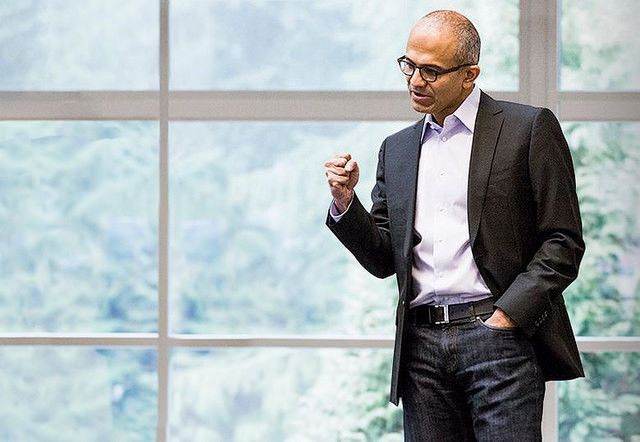Body language is a common but powerful tool used by leaders. They use its "secrets" to leverage positions of power and make themselves appear bigger, more confident and smarter than the rest of us. For most of us, this is just the opposite. We lack the focus to understand the story our body -- or someone else's body -- is telling.
Most of us are painfully aware of how we look and the things we say. Few of us have any understanding of how we're being perceived by others.
Let's try to change that with a crash course in the science of body language.
The Science Behind Body Language
Body language is as complex as any spoken language. But just like learning Spanish, Mandarin or Italian, start with the basic concepts and graduate to a level of fluency. Even a little bit of self-training will lead to a shift in perception, both of yourself and how others interact with you. The rewards are within easy reach -- those that master body language are said to be more respected, likable, and authoritative than those around them.
According to researchers all across the country, body language can indeed improve your standing in both personal and professional relationships. The Princeton University says,
"The message of this research is that there is a lot of information in body language people aren't necessarily aware of."
But there's a lot to learn to get to that point, so let's start small. Actually, it's just the opposite of that, you need to start big, as in making yourself appear bigger.
This is done with good posture.
Standing up or sitting straight with your head held high, while taking up as much space as you can, is considered a power position. A power position isn't unique to humans, either. Throughout the animal kingdom you'll see examples of animals trying to appear bigger, either to win a mate, ward of potential enemies or prove themselves as the leader within a group.
Evidence of this is everywhere. From male peacocks spreading their tail feathers to blowfish inflating themselves to two or three times their original size.
Many of us naturally default to slouching posture, looking around the room while talking to others (or staring at our feet), muttering rather than speaking confidently and clearly, and attempting to slink into the background rather than demanding space.
This is the opposite of what's required to demand respect, and I think most of us have already come to understand that throughout our lives. But, as with all things, self-realization doesn't equate to self-actualization.
Improving Your Body Language Will Improve Your Life
How many times have you been in a social situation and someone just seems to own the room? Everyone is drawn to this socially magnetic person and while you might not be able to discern the reason, you recognize what's happening instantly.
This is largely due to body language and non-verbal cues.
Humans, you see, take most cues non-verbally, even though it might seem that speaking and listening is where we derive the most information.
It works in reverse too.
You know the person you don't like, but don't have a good reason not to? Your perception of everyone is far more driven by non-verbal cues than you realize.
So, why is it worthwhile to focus on your own body language? It affects everything, such as:
- Conflict resolution
- Likability
- Negotiation
- Respect
- Presence
- Personal connection
Use these simple tips to improve your body language.
Assume a Power Pose
This is perhaps the most important starting point in improving your body language. Assuming a power position, as mentioned above, is all about standing up (or sitting down) tall and proud, and taking up as much space as possible.
Research at both Harvard and Columbia Business schools shows that holding your body in a power pose, such as standing up tall with your feet spread and your arms stretched for as little as two minutes can stimulate testosterone production. For significant periods of time after you've assumed the pose, it lowers the stress hormone cortisol too.
Harvard Business School professor Amy J.C. Cuddy says,
People often are more influenced by how they feel about you than by what you're saying. It's not about the content of the message, but how you're communicating it.
Put simply, even power posing before a significant encounter can improve your body language, even if you aren't doing it during the event.
Use the Power of Touch -- Casually
There have been many correlations between the touch and the ability to put people at ease. Of course, there are people out there that just don't like to be touched, but they'll often make that quite clear by stiffening up or pulling away slightly when it happens. Others, you should use the opportunity to shake hands, hug, kiss or just give a quick pat on the back whenever possible.
The key differentiation between those that use touch well, and those that are just plain creepy, is knowing when to use it, and when not to.
Another bit of anecdotal information that I've noticed personally, leaders tend to shake hands with both hands, meaning they'll shake and cover your hand with the other. This obviously lends itself to the theory that touch improves connections between two individuals.
Smile and Maintain Eye Contact
Body language isn't just about the position of your body, it's about your all-around vibe.
A genuine smile -- unlike a contrived one -- makes people feel comfortable and at ease. If you do this while maintaining eye contact when they're speaking, they'll often open up more as they begin to feel a sense of connection, as if you're listening and attentive.
Being attentive shows that you are generally interested in people, and proving your interest is a great way to make others feel at ease. Most of us, however, continue to pull out our phones or let our eyes dart around the room while others talk, which gives the opposite effect, one of disinterest.
The fastest way to get someone to open up around you is to get them talking about themselves, and prove to them that you're genuinely interested in hearing it.
Mirror Others
Much research has been done on this topic and it turns out that most people feel more comfortable with others like them, or those they perceive to be like them. In this case, mirroring others involves taking on their poses, speaking at the same volume and cadence, crossing your legs when they cross theirs, mimicking their expressions (casually), and following along with other similar behaviors.
Casually imitating others creates a subconscious sense of connection (PDF) in humans, a phenomenon that's been studied for some time. The reasons aren't quite clear, but most hypothesis tend to revolve around our desire to seek out those that we feel comfortable with, which is typically those that we feel are most like us.
Continue Your Learning
Many professionals devote their lives and careers to helping others learn about the benefits of body language, and how to improve it. As such, we've just hit the tip of the iceberg here, but if you'd like to continue your learning, we've got you covered.
There are three highly-rated courses on Udemy that each run at $24. These courses take general posture and appearance a step further and attempt to bend and mold your body language for your intended purpose, whether it's love and dating, dominating the business world, or improving your confidence and self-esteem.
- Body Language of Love and Dating
- Double Your Confidence & Self Esteem - Complete Blueprint
- Body Language for Entrepreneurs
Maybe you prefer free stuff. If so, you're in luck. YouTube has a well-reviewed documentary called, Secrets of Body Language made by the History Channel.
Also on YouTube, I would also recommend you watch this five-part course (free) called Body Language Mastery. It starts with the simplest technique -- how to use the subtleness of eye contact.
TED Talks are also a great way to continue your learning.
There have been countless talks that have touched on body language, but Amy Cuddy's (above) is one of the best. Additional, there are talks from Allan Pease, Patryk and Kasia Wezowski detailing general body language findings and tips, or for more specific goals, you can learn to spot a liar, seduce someone, or use body language to become a better public speaker.
Does Body Language Help You?
Body language is a fascinating topic, and unfortunately we've only scratched the surface here today. That said, there is enough here to get you started in your own explorations of how body posture, movements, and a general awareness of how you occupy space are all interconnected and linked to your happiness and success.
What are some examples of how you use body language to achieve a desired result? Or, what common mistakes do you see from others that a few body language tweaks could improve? Share your thoughts with us in the comments below.
Image Credit: Business open gesture by Photographee.eu via Shutterstock, Peacocks by Amit Patel, Satya Nadella by Bhupinder Nayyar, (via Flickr)



